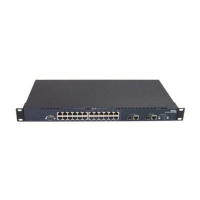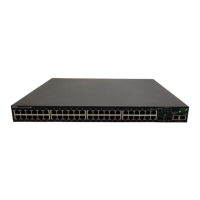BigIron RX Series Configuration Guide 1187
53-1002253-01
Chapter
46
Configuring IPv6 MBGP
Brocade’s implementation of IPv6 supports multi protocol BGP (MBGP) extensions, which allow
IPv6 BGP (known as BGP4+) to distribute routing information for protocols such as IPv4 BGP. The
supported protocols are identified by address families. The extensions allow a set of BGP4+ peers
to exchange routing information for multiple address families and sub-address families.
IPv6 MBGP functions similarly to IPv4 MBGP except for the following enhancements:
• An IPv6 unicast address family and network layer reachability information (NLRI).
• Next hop attributes that use IPv6 addresses.
Configuration considerations
The following are the configuration considerations:
• IPv6 MBGP does not redistribute DVMRP routes. It redistributes static routes only.
• You cannot redistribute IPv6 MBGP routes into BGP4.
• The BigIron RX supports 8192 multicast routes by default. You may need to increase the
maximum number of multicast routes for MBGP. You can configure the device to support up to
153,600 multicast routes.
Configuring IPv6 MBGP
1. Optional – Set the maximum number of multicast routes supported by the BigIron RX.
2. Enable IPv6 MBGP by doing the following:
• Enable PIM Sparse Mode (PIM SM) or PIM Dense Mode (PIM DM) globally and on the
individual Reverse Path Forwarding (RPF) interfaces. PIM must be running on the device in
order for the device to send multicast prefixes to other multicast routers.
• Enable BGP4. If this is the first time you have configured BGP4 on this device, you also
need to specify the local AS number.
3. Identify the neighboring IPv6 MBGP routers.
4. Optional – Configure an IPv6 MBGP default route.
5. Optional – Configure an IPv6 multicast static route.
6. Optional – Configure an IPv6 MBGP aggregate address.
7. Optional – Configure a route map to apply routing policy to multicast routes.
8. Save the configuration changes to the startup-config file.

